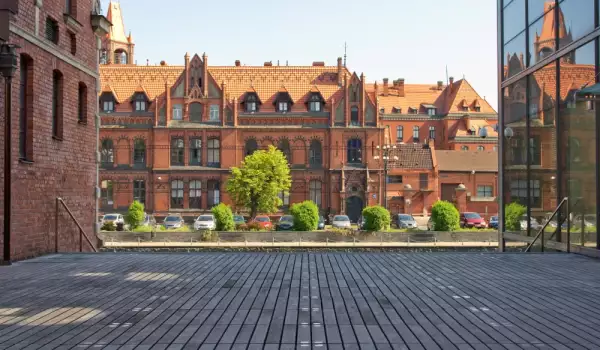Bydgoszcz

Bydgoszcz is a town in Poland, administrative center of Bydgoszcz. The city has a population of about 358 000 people. It is believed that the town's name is associated with the roots of the Slavic word "guest".
Bydgoszcz was founded as a fishing village that was known as Bydgozcya. The city became a fortress for the people who use the trading routes on the Vistula river. In the thirteenth century, the town became the location of the seat of Castellana. The name of the city is mentioned in a written document for the first time in 1238. In 1331 the city was occupied by the Teutonic Knights. Two years later they left.
King Casimir III of Poland provide the status of city to Bydgoszcz in 1346. In the fifteenth century the city's economy is based mainly on trade in wheat. With the agreement of Bydgoszcz, in 1657, they create a military alliance between Poland and Prussia. In 1772 the town was annexed to the Kingdom of Prussia.
In 1807, when Prussia was defeated by Napoleon, it became part of the duchy of Warsaw. In 1871 the city was part of the German Empire, and after World War I, was annexed to Poland. All residents of the city had to accept Polish nationality, otherwise had to leave town. This led to a rapid reduction of ethnic Germans, which fell by more than sixty thousand in only sixteen years. In 1938 the town became part of the Silesia Pomeranian voivodship.
During World War II, Bydgoszcz was occupied by Nazi Germany. In September 1939 an accident occurs, known as Bloody Sunday, during which many Germans and Poles were killed. Bydgoszcz was occupied by the Wehrmacht. Jews in the city were persecuted and thousands were sent to concentration camps and death camps. During the war over thirty-seven thousand inhabitants were killed.

In 1945 the Soviet Army troops arrived after the agreement at Yalta and Poland receives Bydgoszcz city. After the war the city became a modern city, which has retained the beauty of antiquity, and it attracts many tourists.
One of the most beautiful buildings in the town is the church Fara. This is a Gothic church, built in the middle of the fifteenth century. In it are preserved Gothic frescoes.
"Assumption of the Virgin Mary" is also among the city's attractions. This is a small Gothic church, decorated with neo- Renaissance ornaments. Since much of the interior was looted, the church looks pretty modest inside. The painted wooden ceiling from the seventeenth century is one of the most impressive parts of the church.
The industrial center of Bydgoszcz, known as Wyspa Młyńska is among the most interesting sights in Bydgoszcz. It was the industrial center of the city during the Middle Ages.
Architectural icon of the city is the hotel Pod Orłem. It was the design of the famous architect Iozef Święcicki, who created the design of over fifty monumental buildings in Bydgoszcz. It is typical for neo- Baroque forms.
The Basilica of Saint Vincent de Paul, built in the thirties of the twentieth century, is the largest church in Bydgoszcz and one of the largest churches in Poland. The church can hold more than eleven thousand people. A characteristic feature of the neoclassical style temple is the huge dome with a diameter of forty feet.






